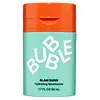What's inside
What's inside
 Key Ingredients
Key Ingredients

 Benefits
Benefits

 Concerns
Concerns

 Ingredients Side-by-side
Ingredients Side-by-side

Water
Skin ConditioningParaffinum Liquidum
EmollientGlycerin
HumectantCetearyl Alcohol
EmollientIsopropyl Palmitate
EmollientDimethicone
EmollientPEG-100 Stearate
Glyceryl Stearate
EmollientStearic Acid
CleansingButyrospermum Parkii Butter
Skin ConditioningPrunus Lannesiana Flower Extract
Skin ConditioningAscorbic Acid
AntioxidantMalic Acid
BufferingPrunus Mume Fruit Extract
HumectantCitric Acid
BufferingPotassium Hydroxide
BufferingPhenoxyethanol
PreservativeButylene Glycol
HumectantNiacinamide
SmoothingSodium Hyaluronate
HumectantXanthan Gum
EmulsifyingCarbomer
Emulsion StabilisingDisodium EDTA
Triethanolamine
BufferingPropylparaben
PreservativeMethylparaben
PreservativeDiazolidinyl Urea
PreservativeParfum
MaskingCI 16255
Cosmetic ColorantWater, Paraffinum Liquidum, Glycerin, Cetearyl Alcohol, Isopropyl Palmitate, Dimethicone, PEG-100 Stearate, Glyceryl Stearate, Stearic Acid, Butyrospermum Parkii Butter, Prunus Lannesiana Flower Extract, Ascorbic Acid, Malic Acid, Prunus Mume Fruit Extract, Citric Acid, Potassium Hydroxide, Phenoxyethanol, Butylene Glycol, Niacinamide, Sodium Hyaluronate, Xanthan Gum, Carbomer, Disodium EDTA, Triethanolamine, Propylparaben, Methylparaben, Diazolidinyl Urea, Parfum, CI 16255
Water
Skin ConditioningIsononyl Isononanoate
EmollientGlycerin
HumectantHeptyl Undecylenate
EmollientGlyceryl Stearate Citrate
EmollientCaprylic/Capric Triglyceride
MaskingPolyglyceryl-3 Stearate
EmulsifyingCetyl Alcohol
EmollientAloe Barbadensis Leaf Juice Powder
Skin ConditioningAcrylates/C10-30 Alkyl Acrylate Crosspolymer
Emulsion StabilisingPersea Gratissima Oil
Skin ConditioningButyrospermum Parkii Butter
Skin ConditioningGlucose
HumectantHydrolyzed Pea Protein
EmollientSodium Chloride
MaskingSodium Succinate
BufferingOenothera Biennis Oil
EmollientHoya Lacunosa Flower Extract
Skin ConditioningAnthemis Nobilis Flower Extract
MaskingHydrogenated Lecithin
EmulsifyingArginine
MaskingTocopheryl Acetate
AntioxidantTocopherol
AntioxidantSodium Phytate
Phenoxyethanol
PreservativeWater, Isononyl Isononanoate, Glycerin, Heptyl Undecylenate, Glyceryl Stearate Citrate, Caprylic/Capric Triglyceride, Polyglyceryl-3 Stearate, Cetyl Alcohol, Aloe Barbadensis Leaf Juice Powder, Acrylates/C10-30 Alkyl Acrylate Crosspolymer, Persea Gratissima Oil, Butyrospermum Parkii Butter, Glucose, Hydrolyzed Pea Protein, Sodium Chloride, Sodium Succinate, Oenothera Biennis Oil, Hoya Lacunosa Flower Extract, Anthemis Nobilis Flower Extract, Hydrogenated Lecithin, Arginine, Tocopheryl Acetate, Tocopherol, Sodium Phytate, Phenoxyethanol
 Reviews
Reviews

Ingredients Explained
These ingredients are found in both products.
Ingredients higher up in an ingredient list are typically present in a larger amount.
This ingredient is also known as shea butter. It is an effective skin hydrator and emollient.
Emollients help soothe and soften your skin. It does this by creating a protective film on your skin. This barrier helps trap moisture and keeps your skin hydrated. Emollients may be effective at treating dry or itchy skin.
Shea butter is rich in antioxidants. Antioxidants help fight free-radicals, or molecules that may harm the body. It is also full of fatty acids including stearic acid and linoleic acid. These acids help replenish the skin and keep skin moisturized.
While Shea Butter has an SPF rating of about 3-4, it is not a sunscreen replacement.
Shea butter may not be fungal acne safe. We recommend speaking with a professional if you have any concerns.
Learn more about Butyrospermum Parkii ButterGlycerin is already naturally found in your skin. It helps moisturize and protect your skin.
A study from 2016 found glycerin to be more effective as a humectant than AHAs and hyaluronic acid.
As a humectant, it helps the skin stay hydrated by pulling moisture to your skin. The low molecular weight of glycerin allows it to pull moisture into the deeper layers of your skin.
Hydrated skin improves your skin barrier; Your skin barrier helps protect against irritants and bacteria.
Glycerin has also been found to have antimicrobial and antiviral properties. Due to these properties, glycerin is often used in wound and burn treatments.
In cosmetics, glycerin is usually derived from plants such as soybean or palm. However, it can also be sourced from animals, such as tallow or animal fat.
This ingredient is organic, colorless, odorless, and non-toxic.
Glycerin is the name for this ingredient in American English. British English uses Glycerol/Glycerine.
Learn more about GlycerinPhenoxyethanol is a preservative that has germicide, antimicrobial, and aromatic properties. Studies show that phenoxyethanol can prevent microbial growth. By itself, it has a scent that is similar to that of a rose.
It's often used in formulations along with Caprylyl Glycol to preserve the shelf life of products.
Water. It's the most common cosmetic ingredient of all. You'll usually see it at the top of ingredient lists, meaning that it makes up the largest part of the product.
So why is it so popular? Water most often acts as a solvent - this means that it helps dissolve other ingredients into the formulation.
You'll also recognize water as that liquid we all need to stay alive. If you see this, drink a glass of water. Stay hydrated!
Learn more about Water